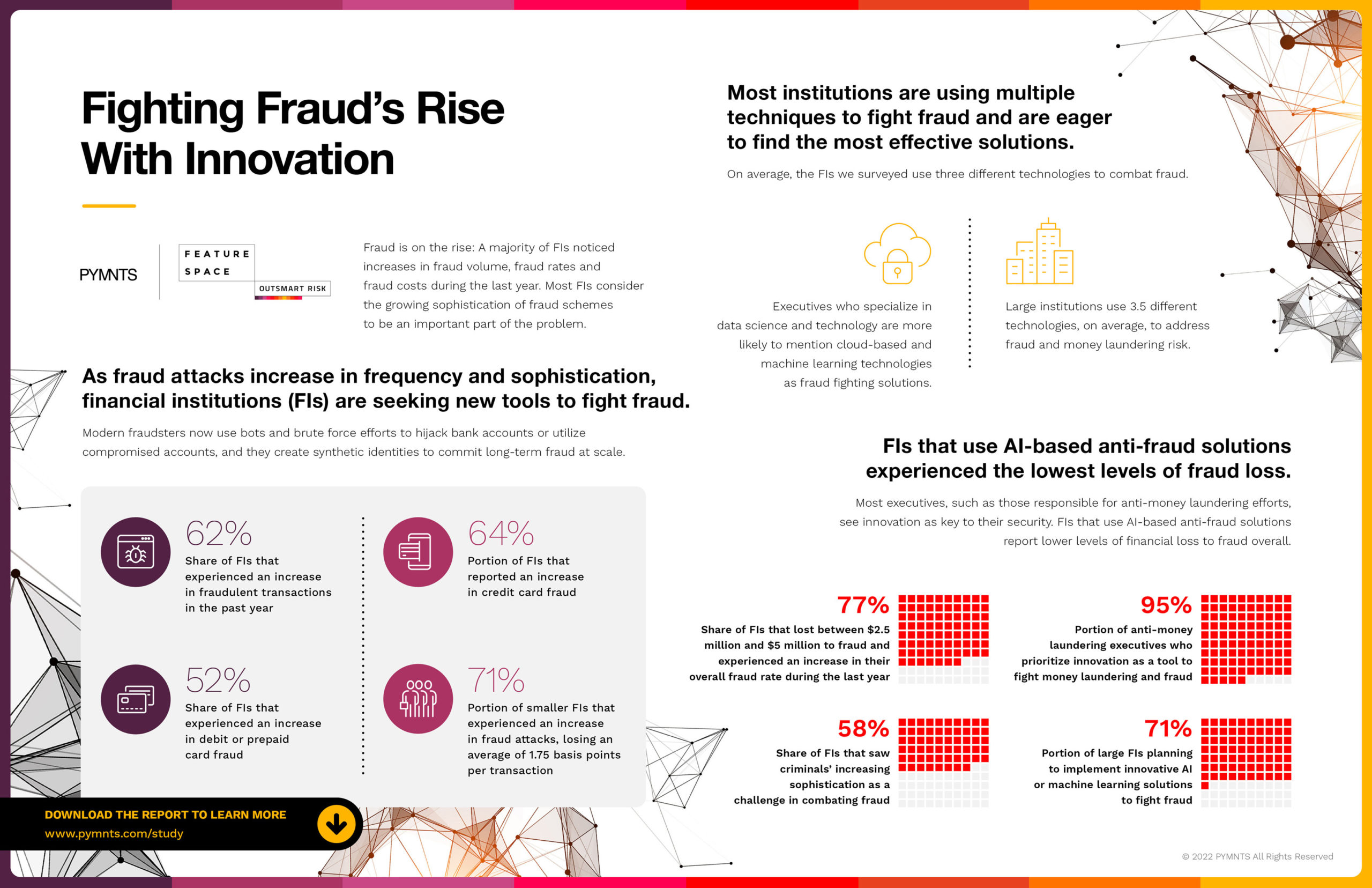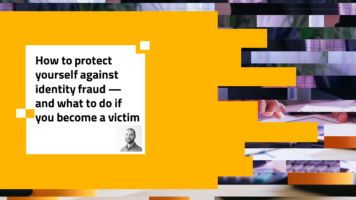Featurespace research shows scams already have a chokehold on U.S. payments.
Scams typologies now represent two of the five largest volumes of fraud in the U.S. according to Featurespace and PYMNTS research. The report, which leveraged The Federal Reserve FraudClassifier Model to ensure consistency in categorization of fraud transactions and losses, found that Product and Services Fraud, and Relationship and Trust Fraud are major drivers of fraud volumes and losses for banks, credit unions, issuers and processors in the region.
What’s clear from the research is that scams are not a future problem, and that U.S. financial institutions (FIs) should be implementing technologies, processes, and strategies to combat the tidal wave of scams right now.
Top Scams in the U.S.
Although the FraudClassifier model doesn’t get more granular on how the scams manifest for the victims, there’s plenty of research and headlines that outline the experience for the U.S. population. According to ConsumerFraudReporting.org the current top ten scams in 2022 in the U.S. are as follows;
Debt Collection: Scammers contact the victim by phone, mail, email or SMS with false claims of a debt owed.
Fake Government Officials : Scammers create fake government agencies, non-existent charitable organizations and other fake groups and entities, and request donations or payments.
Identity Theft, Phishing and Pharming: Scammers use details gleaned from stolen mail, social media, or sold from hacking attacks and shared on the dark net to weave a convincing narrative to the victim that convinces them to make a payment.
Phone scams: Scammers contact the victim by phone, perhaps impersonating bank staff, and convince them to make a transfer, click and log into a fraudulent website, or share a one-time password (OTP).
Loans Scams / Credit Fixers: Victims are encouraged to make an advance fee or share online banking details in order to receive a loan, which never materializes.
Fake Prizes, Sweepstakes, Free Gifts, Lottery Scams: Victims receive an unexpected notification (email, phone call, mail, etc.) that they’ve won. The scammer convinces the victim that in order to collect their winnings they must share account information/online banking credentials with fraudster.
Internet merchandise scams: The scammer posts a fraudulent online posting for the purchase of certain item(s). This could be as a fake merchant, or on resale platforms. The victim makes payment, by P2P payment or by card and does not receive the goods.
Automobile-Related Complaints: Scammers pose as lawyers following up on supposed accidents to seek compensation for the victim. They take a fee and never file papers.
Credit Bureaus and Related Credit Scams: Scammers pose as credit bureaus, perhaps ‘securing’ a record against fraudsters, or offering services to fix a credit rating. The victim is convinced to make a payment or share key information that can be used by the scammer to gain access to funds.
Phishing/Spoofing Emails: Scammers send emails that appear to be from a legitimate sender, ‘spoofing’ the sender details to appear as the victim’s bank, utility supplier, or other known entity. They encourage victims to log into fraudulent websites to glean their passwords.
This list is replicated across the world. Scams are big business and provide such a big ‘Return on Investment’ for criminals, it’s hard to see it stopping any time soon.
Criminals/ scammers/ fraudsters show guile and cunning when pivoting to where a situation can be exploited. Across the world right now there are endless opportunities for criminals to take advantage of citizens; whether it be war, the cost of living, covid, monkey pox, people are afraid and the bad guys are ready to strike.
Are scams different in America?
Scams present slightly differently in each region and country. They have different societal approaches to interactions and criminals will adapt their attack vector to accommodate this, but inherently they want something from you, whether it’s money or data. For example, in the U.S. the threat of not paying a medical bill wouldn’t have the same effect as in a country with universal health care.
Due to the sheer size and constitutional makeup of the U.S., there are plenty of gaps for criminals to hide in and try out different forms of attack. Also, the ability to find personal data about an individual can be a lot easier in the U.S. than elsewhere in the world as it is not subject to General Data Protection Regulation (GDPR). Having this Personally Identifying Information (PII) and data at their disposal allows criminals to use it to build trust with a victim, with the goal of getting them to part with their money ‘freely’ or divulge further information which could allow the scammer to take it without their consent.
Scams evolve over time. I’ve written before about how the Modus Operandi of a scam stays the same but the method in which it is conducted will adapt to technology advancements. The Spanish prisoner letter became the Nigerian Prince email, which became a Crypto investment scam. Fundamentally, it’s about identifying a weakness, building trust, then exploiting it for their gain…and your loss.
Getting to Grips with Scams
Is being scammed just a part of modern life? It doesn’t have to be and there is plenty being done to prevent it becoming so. However, overcoming scams is a big task that won’t be fixed overnight by organisations operating in isolation. Criminals are adept at modifying and adapting their techniques, which can leave FIs feeling like they are playing a massive game of scam ‘whack-a-mole’: as soon as one door is closed, scammers create a new one.
To win, we have to be even more adaptive than they are. Luckily there are more good guys than scammers, and we can work collaboratively across the globe to share information and best practice even more than they do.
Everyone has their role to play, it’s not just up to the banks, who invest heavily in technology and resources to stop these attacks, or law enforcement, or even us the consumers. It’s all of our responsibility to act, share, educate to stop these scammers.
Discover how your organization can prevent more scams by downloading Scams: The Complete Guide.
Share

 by
by 




